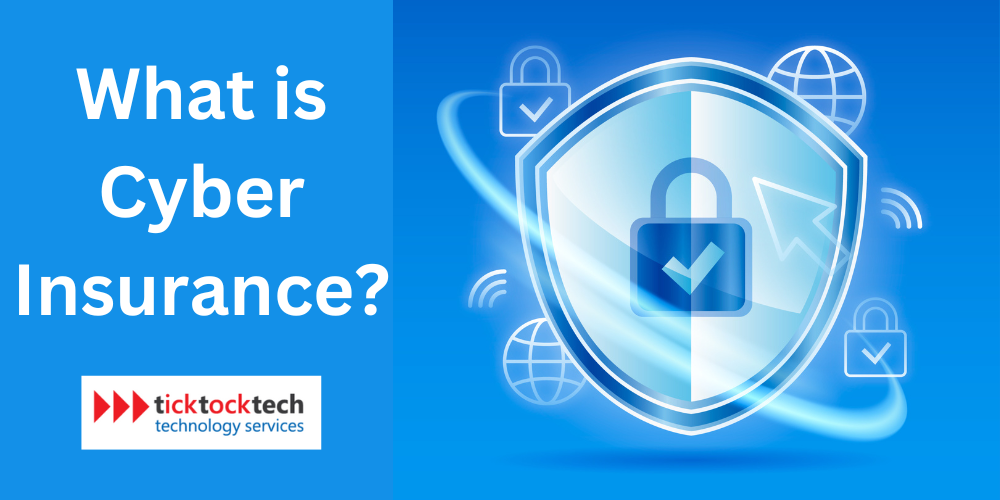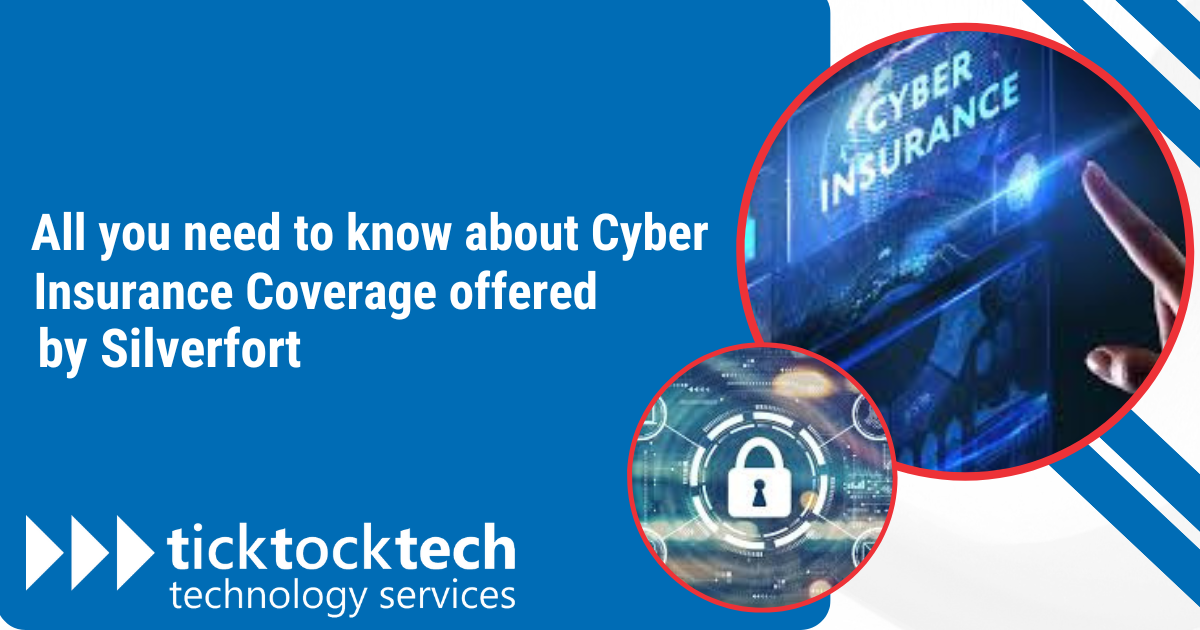With the rise of digital technology, securing your online presence is crucial. That’s where cyber insurance comes in, providing financial protection in case of a security breach. In this blog post, we’ll review Silverfort’s cyber insurance coverage and what it can do for you.
What is Cyber Insurance?

Cyber insurance is a contract entities can purchase to reduce financial risks associated with conducting business online. In exchange for a monthly or quarterly fee, the insurance policy transfers some of the risks to the insurer.
Cyber insurance emerged in the late 1990s due to the growing reliance on technology and the increase of cyber threats. It initially focused on data breaches and computer attacks but now covers several crimes.
Attacks and breaches are on the rise, making cyber insurance necessary for many businesses. With a 600% increase in cybercrime since the start of the COVID-19 pandemic, it’s clear that cyber insurance has become a necessity.
Cyber insurance also originates in errors and omissions (E&O) insurance, which protects against faults and defects in services. Some cyber insurance policies contain specific provisions for E&O, but most providers sell them as separate policies.
Entities purchase cyber insurance policies to reduce financial risks associated with doing business online. These policies are sold by many providers that offer related business insurance, business liability, and commercial property insurance.
Most policies include first-party coverage, which applies to losses that directly affect a company, and third-party coverage, which applies to losses suffered by others from a cyber event or incident. Cyber insurance policies can help you cover financial losses and costs associated with remediation.
What are the Objectives of Cyber Insurance?
Cyber insurance offers many benefits for startups and established businesses. Some of the benefits include:
1. Coverage for Data Breaches
One of the primary objectives of cyber insurance is to cover the costs associated with data breaches. These coverages include legal fees, recovery costs, and identity theft protection. With cyber insurance, businesses can minimize the financial impact of a data breach and ensure that they have the resources necessary to recover and move forward
2. Reimbursement for Business Loss
Another objective of cyber insurance is to reimburse businesses for lost revenue caused by cyber-attacks. Cyber attacks can disrupt business operations and cause significant financial losses. Cyber insurance can help mitigate these losses by providing reimbursement for lost income and ensuring that businesses can continue operations despite the attack.
3. Defense Against Cyber Extortion
Cyber insurance also provides a defense against cyber extortion. Extortion occurs when hackers demand payment in exchange for restoring access to a business’s data or systems. Cyber insurance can help businesses recover the costs associated with cyber extortion and ensure they are not held hostage by hackers.
4. Forensic Investigative Support
Finally, cyber insurance provides support for forensic investigations. After a cyber-attack, it’s essential to identify the source of the vulnerability and implement preventive strategies to prevent future attacks. Cyber insurance can reimburse the costs associated with forensic investigations, ensuring that businesses can take action to protect themselves from future attacks.
Understanding Silverfort’s Cyber Insurance: What does Silverfort do?
Silverfort is at the forefront of cybersecurity technology, dedicated to protecting user identities and credentials. The platform is structured to enhance security measures without disrupting system performance or requiring software installations.
Silverfort protects against all identity-based threats, including account takeovers, insider threats, and advanced persistent threats targeting user credentials. The platform’s holistic approach ensures sensitive data and critical systems remain secure against the evolving landscape of cyber attacks. Silverfort’s approach doesn’t require software agents or network proxies, unlike traditional security methods. This means organizations can implement Silverfort’s solutions quickly without impacting system performance.
Furthermore, Silverfort’s platform utilizes artificial intelligence to detect suspicious behavior patterns. By analyzing user behavior and contextual information, the platform can adapt authentication policies to match assessed risk levels. Silverfort protects without disrupting legitimate user access. The platform empowers organizations to safeguard their assets while maintaining seamless access for authorized users.
Silverfort Features: What does Silverfort offer?
Silverfort offers nine features designed to enhance cybersecurity and identity protection. These features include:
1. Agentless MFA
Agentless Multi-Factor Authentication (MFA) is a prominent feature offered by Silverfort, providing enhanced security without requiring modifications to servers or applications. Through Silverfort’s innovative technology, MFA protection can be extended to many resources, such as legacy applications, command line access, and OT systems. This enables the application of MFA to file shares, networking infrastructure, admin access, and more, even if they were previously unprotected.
The unique architecture of Silverfort allows for end-to-end MFA coverage without deploying proxies or installing agents on your machines. You also have the flexibility to use Silverfort as your primary MFA solution or integrate it with leading providers like Microsoft, Okta, Ping, and more. By leveraging Agentless MFA, you can protect all your resources and access interfaces, from homegrown applications to SaaS platforms, VPNs, and desktop logins. Silverfort also offers the ability to extend or consolidate your existing MFA solution, covering previously unsupported resources and reducing costs.
2. Securing Service Accounts
Silverfort’s Service Account Protection empowers organizations to boost the security of their service accounts, mitigating potential risks associated with these accounts. Service accounts are vital for automating processes and facilitating system-to-system interactions, but they can also be vulnerable to security threats if not adequately protected.
Silverfort’s solution implements ready-to-use Zero Trust access policies tailored to each service account’s specific behavior. This approach creates a virtual perimeter of protection, preventing threat actors from exploiting service accounts for lateral movement attacks. By reducing unauthorized access, Silverfort enhances the organization’s overall security frame.
3. Ransomware Protection
Silverfort offers Ransomware Protection to defend against ransomware attacks. This feature implements adaptive Multi-Factor Authentication (MFA) policies on critical tools like PsExec, PowerShell, and WMI, preventing the spread of ransomware.
The platform blocks attackers from using compromised credentials to deliver ransomware via vectors such as RDP, which accounts for 82% of ransomware attacks. Silverfort’s risk engine detects suspicious authentication traffic, including attempts to propagate ransomware through tools like CMD and PowerShell.
Silverfort’s Ransomware Protection is a crucial layer of defense that complements existing measures, limiting the scope of ransomware attacks even if preventive measures fail. It’s a powerful feature that enhances security posture and protects against evolving ransomware threats.
4. Lateral Movement Prevention
Silverfort’s Lateral Movement Protection is a powerful feature to ensure the security of an organization’s resources. By applying MFA protection on all access interfaces, Silverfort prevents attackers from moving laterally within the network. This proactive approach reduces the risk of unauthorized access and compromise of user account credentials. Silverfort detects and prevents malicious access attempts in real time, isolating compromised machines and accounts before an attack can spread.
The solution combines rule-based policies with risk-based policies triggered by unusual behavior and techniques. Silverfort offers a defense-in-depth strategy that minimizes the chances of successful lateral movement attacks. Its AI-driven risk analysis constantly watches over access attempts, spotting irregularities that suggest potential lateral movement activities.
5. Privileged Access Management
Silverfort’s Privileged Access Management (PAM) feature simplifies the implementation of PAM by automatically identifying service accounts and detecting unseen admin roles. Furthermore, Silverfort offers comprehensive coverage, including accounts that traditional solutions might not cover due to technical constraints or complex dependencies. It mandates the use of PAM for admin access and integrates MFA directly into the PAM framework, enhancing security. Organizations benefit from the automated detection of admin accounts, which facilitates ongoing supervision and risk assessment.
Moreover, Silverfort enhances the security of service accounts with dynamic, risk-based policies, going beyond traditional security practices. For organizations already using PAM systems, Silverfort enhances their capability by adding adaptive MFA to all possible access, strengthening the defense against compromised credential exploitation.
6. Hybrid IAM Consolidation
Using Hybrid IAM Consolidation, companies can boost security. They do this by extending Identity and Access Management (IAM), risk-based sign-ins, and Multi-Factor Authentication (MFA) across all apps and resources, both in the cloud and on-site. This feature also improves how efficiently operations run. It lets you set up, oversee, and apply access rules for all users and accounts everywhere, using just one platform.
It gives users a smooth experience by making the sign-in method the same for old and cloud resources, reducing the burden of multiple MFA steps with intelligent access policies. Also, Silverfort’s tool helps find and automatically set up apps and resources in mixed setups. It aids the shift of cloud and web apps to your selected cloud IAM. This is done by sorting the shift order based on how much they’re used and their connections.
7. Identity Zero Trust
This feature enables the application of zero trust principles within the identity management sphere, allowing for the adoption of strict access policies based on the least-privilege model for internal and cloud-based systems. Silverfort’s approach to security offers detailed insights by monitoring all sign-in and access activities. This helps in understanding the interactions between users and resources, which in turn, supports the creation of responsive access policies. The implementation process is another highlight, enabling organizations to activate zero trust defenses across their networks in just a few hours.
This feature also prioritizes comprehensive surveillance, ensuring that every access attempt by a user is fully assessed. By adopting the Gartner CARTA framework, Silverfort delivers immediate risk assessments for both user and machine access requests in any setting.
8. Visibility & Risk Analysis
Silverfort’s Visibility and Risk Analysis feature provides organizations with real-time visibility into access attempts across their hybrid environment and AI-driven risk analysis of users and resources. This enables organizations to monitor and audit users, resources, and authentication logs, gaining insights into their hybrid network and identifying security weaknesses and potential risks.
The feature also includes threat detection capabilities to monitor and identify authentication anomalies. Investigations are efficient, with full visibility into each user’s access trail and continuous risk assessment based on behavioral analysis and known attack patterns. Silverfort integrates with SIEM/SOAR/UEBA/log analytics solutions, enriching the Security Operations Center (SOC) with granular access logs. This ensures the visibility of all user and service account access attempts and risk scores.
9. Risk-Based Authentication
This feature enables adaptive policies based on real-time risk analysis across all users. Silverfort’s Risk-Based Authentication detects behavioral anomalies and malicious patterns, such as brute force attacks, Pass the Hash, Pass the Ticket, and impossible travel, by applying real-time analysis on each access request. This allows organizations to configure access policies that leverage Silverfort’s risk scoring and trigger proactive security controls like MFA or blocking access to prevent suspicious users from accessing valuable resources.
Silverfort’s Risk-Based Authentication has been successfully implemented by leading organizations, such as a European bank, which experienced improved security, real-time threat detection, and containment of risks. The feature has received high ratings from users, demonstrating its value in protecting identities and preventing unauthorized access. With its advanced risk analysis capabilities and seamless integration with existing security infrastructure, Silverfort’s Risk-Based Authentication is a powerful solution for organizations seeking maximum security and control over access to their resources.

